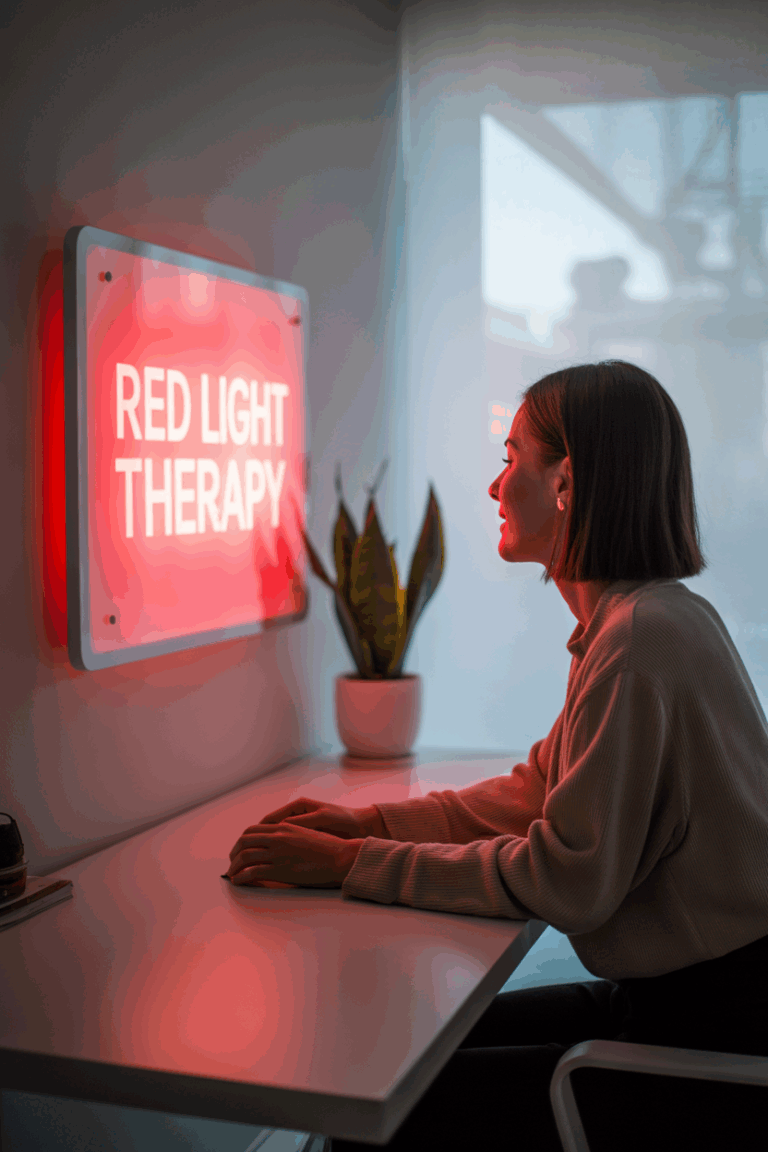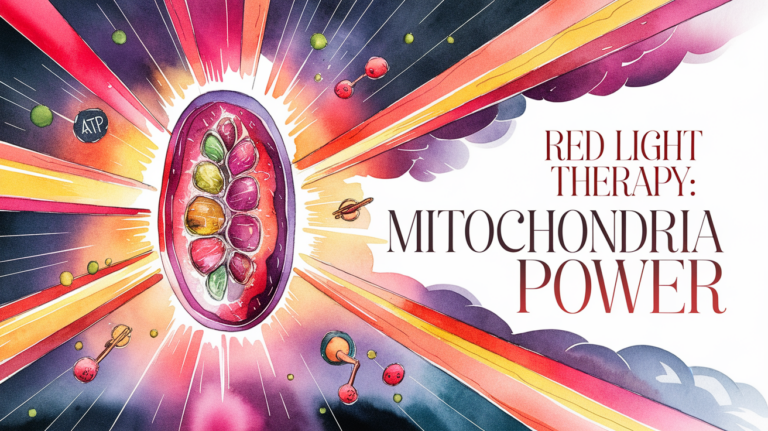Red Light Therapy Goggles: One Test To See If You Need Them
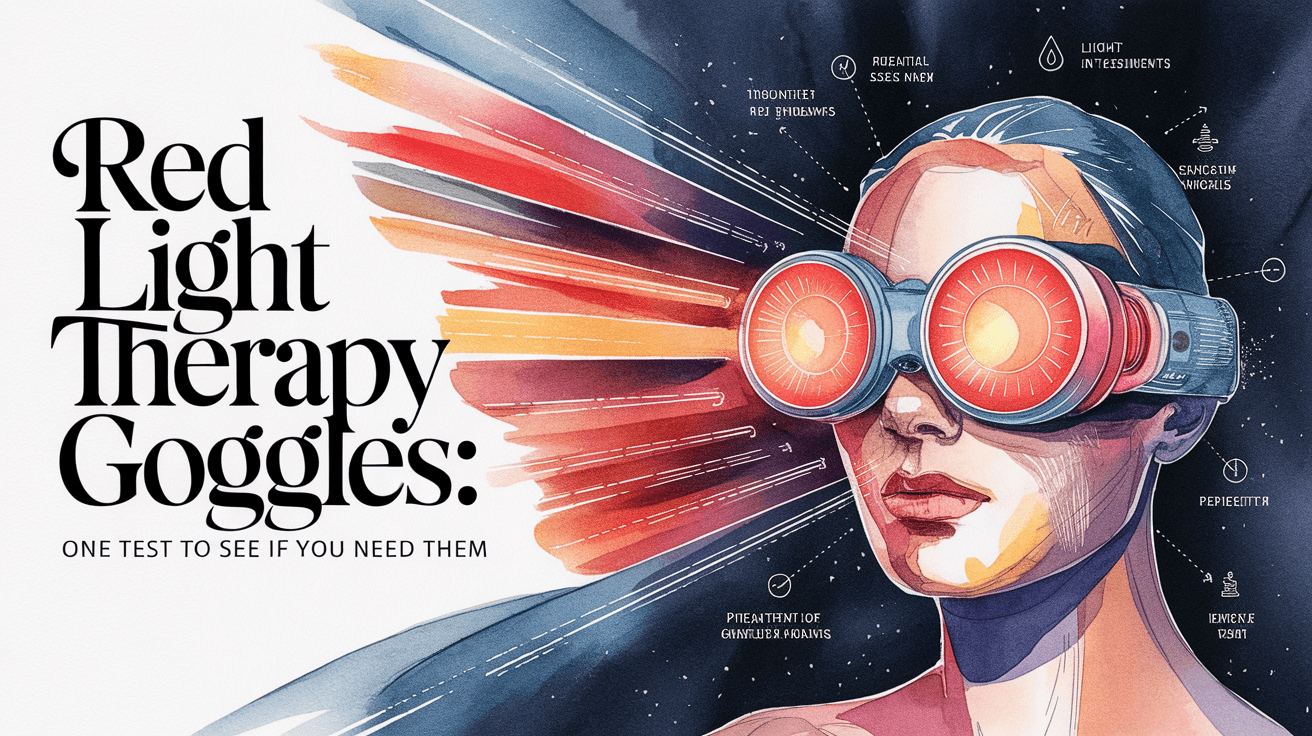
- Adjustable elasticity ensures a comfortable fit.
- Provides UV protection, safeguarding your eyes during light therapy sessions.
- Suitable for various applications, including OPT/IPL laser procedures and red light therapy.
- Customers describe the glasses as comfortable, effective, and a good value.
- The included case offers convenient and protective storage.
- Durable design provides long-term use.
- Some users have found these goggles effective at blocking out room lighting and protecting their eyes during red light therapy.
- Adjustable strap allows for a customized fit.
- Offers a better quality than salon-provided options.
Do I Need Red Light Therapy Goggles?
Yes, red light therapy shows promise for eye health, with studies suggesting it can enhance mitochondrial function and even sharpen vision. But does this mean you can shine any red light into your eyes without precaution? The simple answer is no, and the first step is knowing when you need red light therapy goggles.
Think about what happens when you glance toward the sun. Your eyes instinctually narrow, and you might feel a slight pressure or discomfort. This is your body’s natural defense mechanism kicking in.
This squinting reflex is your most basic protection against overly bright light. It’s a clear signal from your body that the light intensity is too high for your retina’s comfort. Without it, the light-sensitive cells in your eyes could become overstimulated, leading to discomfort or even damage with prolonged exposure.
So, here’s the simplest rule: if you are using an LED red light therapy device and find yourself squinting, your body is telling you to put on protective goggles. Many dermatology and safety resources recommend this exact precaution during direct exposure.
This common-sense advice comes directly from experts like Dr. Andrew Huberman, a neurobiology and ophthalmology professor at Stanford University. He emphasizes listening to your body’s innate signals for safety.
Are Lasers and LEDs Different for Eye Safety?

One of the main reasons red light therapy has become so accessible is the industry’s shift from expensive lasers to more affordable light-emitting diodes (LEDs). While both can deliver therapeutic light, they differ significantly in how they work and the risks they pose to your eyes.
A laser outputs light in focused columns, known as “coherent” light. This structure allows a laser to concentrate a tremendous amount of energy onto a very small target. It is this concentration that makes lasers so powerful and, consequently, so dangerous.
LEDs, on the other hand, produce “non-coherent” light. This light spreads out from its source, making it much less concentrated and intense than a laser beam. While still bright, it doesn’t carry the same focused energy that can instantly damage tissue.
This key difference explains why you need different eye protection for each type of device. The rules for a laser are not the same as the rules for an LED panel.
Why Laser Light is So Dangerous for Your Vision

When it comes to laser-based red light therapy, there is no room for debate or guesswork. If you are using any kind of laser device, you must wear appropriate safety goggles without exception. Don’t wait to see if you squint; the damage can happen faster than you can react.
Lasers pose a dual threat to your eyes. First, the incredible brightness of the coherent beam can overstimulate and destroy the eye’s sensitive photoreceptor cells. Second, and just as critically, the concentrated energy generates heat that can literally burn the delicate tissues of your retina.
Lasers can easily and permanently damage the eyes, potentially causing blindness. This is not an exaggeration but a well-established medical fact. Even a low-energy laser concentrates light in a way that is profoundly dangerous to your vision.
As outlined in standard medical protocols, protective eyewear is a non-negotiable part of using any therapeutic laser. The risk of irreversible harm is simply too high to ignore.
What a Groundbreaking Eye Study Revealed

In a landmark study published in Scientific Reports, researchers explored the effects of red light therapy on participants’ vision. They used a very specific, low irradiance of 50 milliwatts per square centimeter (50 mW/cm2), which is dim enough to be considered safe for use near closed eyes in a supervised clinical setting.
During the experiment, subjects kept their eyes closed as researchers administered the light through their eyelids for three minutes. One group received a single dose of 670 nm red or 790 nm infrared light in the morning, while a second group received the same therapy in the afternoon.
The results were fascinating. The morning therapy group experienced a significant improvement in their color perception, with vision improving by an average of 14% to 20%. Notably, older subjects saw the most substantial gains.
In contrast, the afternoon group showed no improvement at all. This compelling result suggests that the timing of red light therapy is crucial for its effectiveness on eye health, likely tied to our cells’ natural circadian rhythms.
Why You Can’t Replicate a Clinical Study at Home

The successful study on vision improvement used a light intensity of 50 mW/cm2, which was deemed safe to shine through closed eyelids in a controlled environment. However, this does not mean that a consumer-grade device you purchase advertising the same intensity is safe to use on your eyes.
The critical difference lies in regulation and calibration. The equipment used in clinical research is professionally calibrated and precisely measured to ensure both safety and efficacy. These are not qualities you can assume in a product bought online.
Consumer red light therapy devices are not regulated as medical devices. There is no guarantee that their stated specifications are accurate. A light marketed as 50 mW/cm2 could be significantly brighter, posing an unexpected risk.
For this reason, you should never assume a device is safe for your eyes based on its product description alone. The potential for discrepancy between advertised power and actual output is a serious safety concern.
Always speak to an ophthalmologist before treating your eyes with any form of light therapy. Your eye doctor can help you understand the risks and determine if it’s a safe option for you.
How Red Light Energizes Your Eyes at a Cellular Level
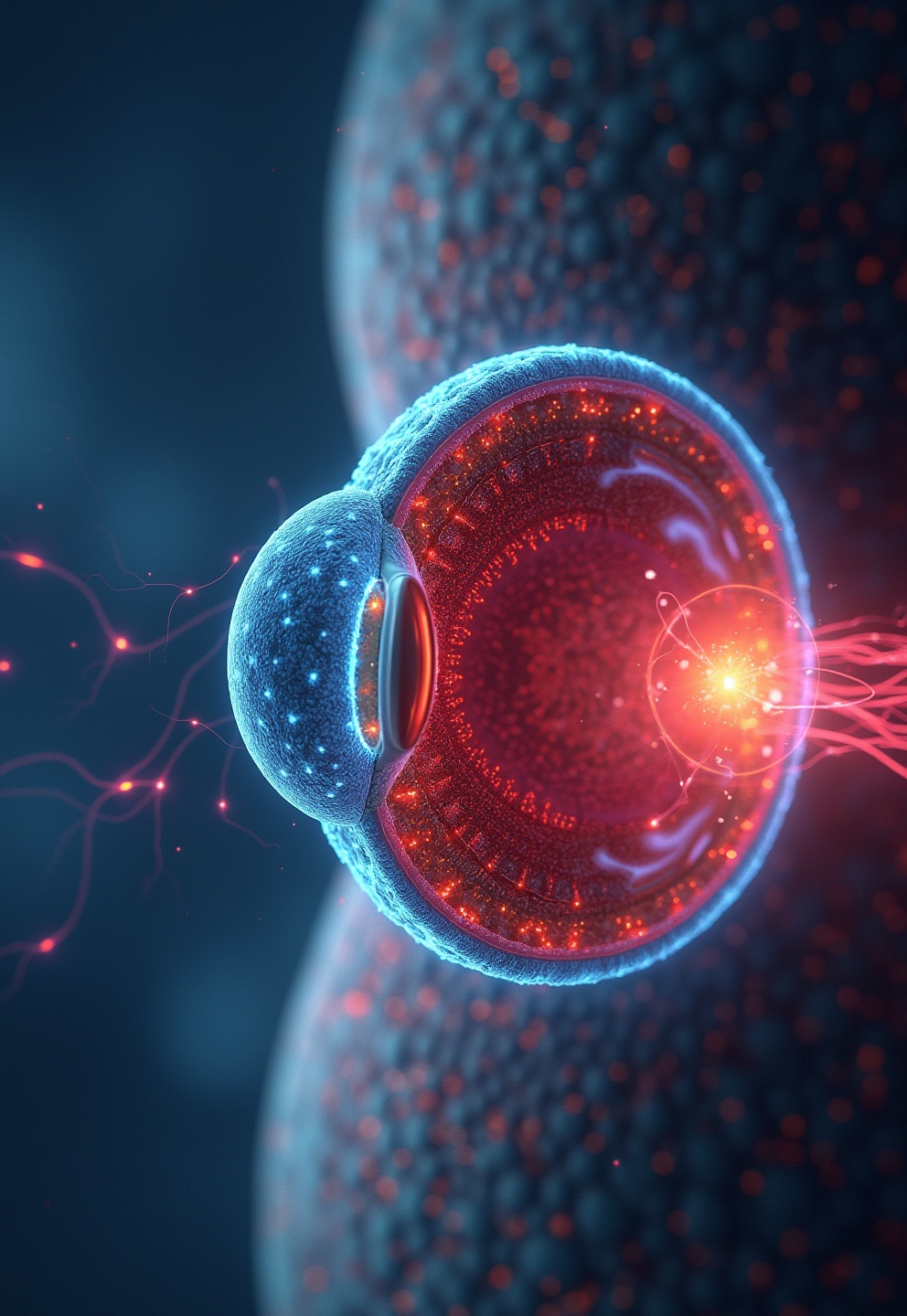
To understand how red light therapy can benefit the eyes, we have to look at the cellular level. Our eyes are incredibly active organs, using a tremendous amount of energy simply to help us see the world around us. This energy is produced by tiny powerhouses inside our cells called mitochondria.
The retina, at the back of the eye, is packed full of mitochondria to meet these high energy demands. When light enters the eye, it can be absorbed by two different types of cells for two different purposes.
Photosensitive melanopsin cells absorb light to create the chemical and electrical signals that our brain interprets as images. In a different process, the mitochondria within our eye cells can also absorb certain wavelengths of light, specifically red and near-infrared light.
When mitochondria absorb this light, they don’t create a visual image. Instead, they use that light energy to ramp up their production of cellular fuel, called ATP. Red light therapy appears to help dormant, aging, or underperforming mitochondria come back online, increasing the total energy available to the eye’s cells.
How Fading Mitochondria Can Affect Your Vision

The natural decline of mitochondrial function that occurs with age is one of the primary reasons our eyesight tends to fade as we get older. When the cellular powerhouses in our eyes produce less energy, the cells themselves can’t perform their jobs as effectively.
This isn’t just a theory; it’s a well-documented biological process. According to a paper in the journal Biochemical Pharmacology, this mitochondrial dysfunction is directly implicated in several major age-related eye diseases.
These conditions include age-related macular degeneration (AMD), diabetic retinopathy, glaucoma, and retinopathy of prematurity. In each case, a failure at the cellular energy level contributes to the progressive loss of vision.
This connection is what makes red light therapy so intriguing. By potentially revitalizing these flagging mitochondria and boosting their energy output, the therapy may offer a way to support the health of aging eyes and combat the cellular decline that leads to vision loss.
An Expert’s Warning: Why Intense Light Is a Hazard

Dr. Andrew Huberman, a respected professor of neurobiology and ophthalmology at Stanford University, offers a crucial word of warning. He explains, “The cells in the back of the eye that convert the light information into electrical signals… are extremely metabolically active.” This high activity makes them particularly vulnerable.
Dr. Huberman strongly cautions against using intense red light therapy devices intended for skin treatments on or near the eyes. The risk of harm is significant because these panels are designed for an entirely different purpose.
“I don’t want people taking technologies that were designed for local application and beaming those into the eyes. That could be very, very bad and damaging to your retinal and other tissues. Certainly, wouldn’t want you taking bright light of very high intensity of any kind and getting cavalier about that.”
Dr. Andrew Huberman
He elaborates that devices made for treating skin issues like wounds or acne typically use very high-intensity light to penetrate the skin. This level of brightness is far too powerful for direct or indirect exposure to the delicate tissues of the eyes.
Listen to Your Body’s Natural Warning Signs

Expanding on his warning, Dr. Huberman emphasizes the importance of a simple, intuitive rule: listen to your body. Your natural reflexes are there to protect you from harm.
He states that if any light source, whether it’s sunlight or a device, is painful or forces you to squint, it’s a clear indication that it’s too bright to look at without protecting your eyes. This isn’t complex science; it’s a fundamental safety instinct.
“Any time you look at any light source, sunlight or otherwise, that’s painful and makes you want to squint or close your eyes, that means it’s too bright to look at without closing your eyes.”
— Dr. Andrew Huberman
He underscores the gravity of this advice with a stark reminder: “And again, retinal neurons do not regenerate. Once they are gone and dead, they do not come back.”
There is currently no technology capable of replacing these vital cells. The message is clear and urgent: do not take risks with your vision. You are responsible for your health, and protecting your retinas from damage is paramount.
How to Make a Safe Action Plan with Your Eye Doctor

If you’re interested in exploring the potential benefits of red light therapy for your own eyes, the first and most critical step is to consult an expert. Do not attempt to create a protocol on your own. Instead, work with your ophthalmologist to ensure your safety.
To have an informed conversation, you can bring the parameters from the successful clinical study to your doctor. This information can serve as a valuable starting point for discussion, not a DIY guide.
Here are the details from the study protocol that showed eyesight improvement:
- Wavelength: 670 nm red light or 790 nm near-infrared light
- Irradiance: 50 mW/cm2 (a low, clinically measured intensity)
- Fluence (Total Dose): 9 joules
- Session Duration: A single three-minute session
- Timing: Performed in the morning
Presenting this data to your eye doctor allows you to discuss whether a similar, professionally supervised approach could be appropriate and safe for you. This collaborative effort is the only responsible way to proceed.
The Bottom Line: Prioritize Safety for Your Sight
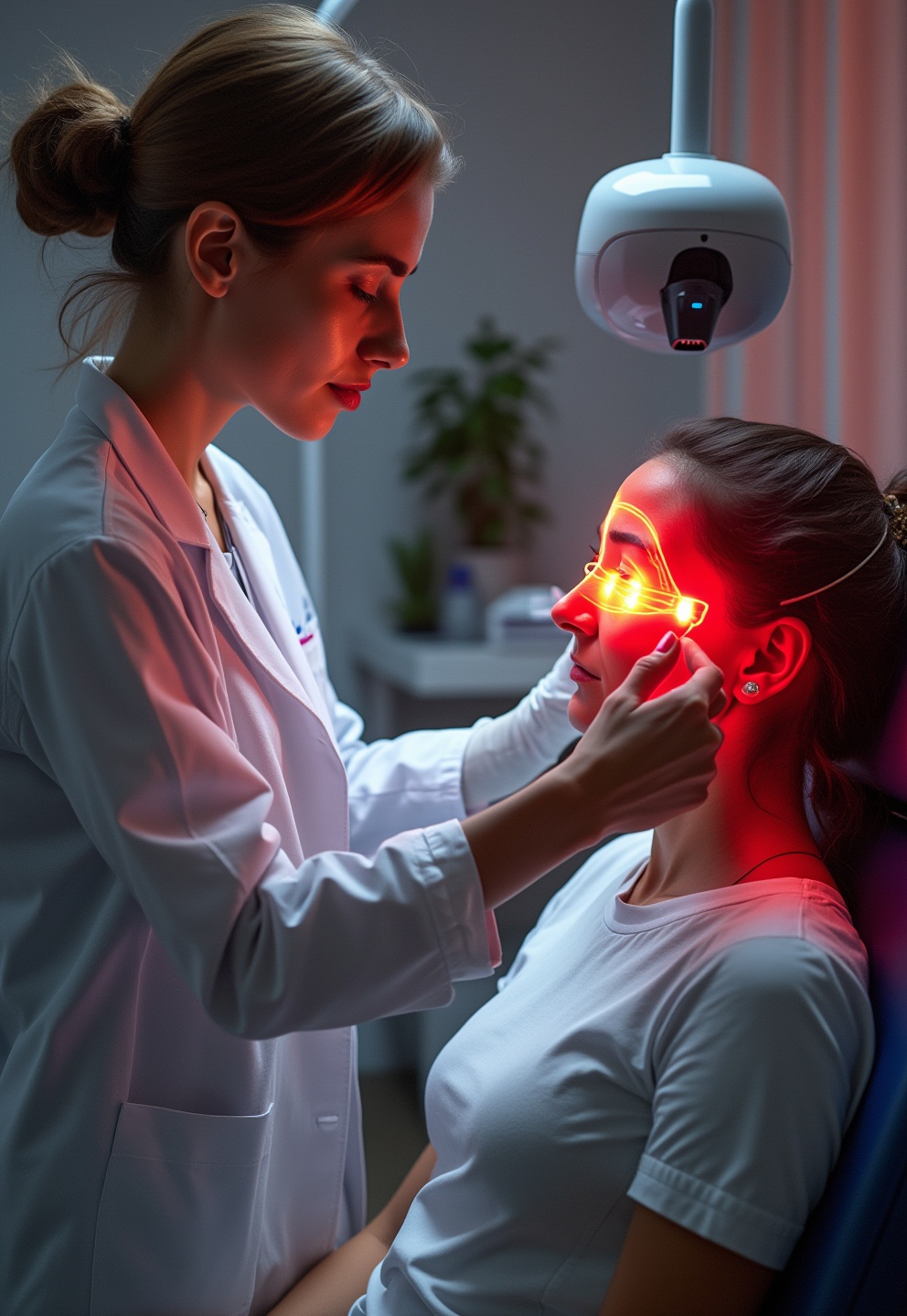
While the emerging science behind red light therapy for vision is exciting, it comes with serious caveats. The potential for benefits, particularly in aging populations, is matched by the very real risk of retinal damage from improper use.
The danger is highest and most immediate with laser-based devices, which can cause permanent blindness in an instant. However, risk still exists with overly bright, uncalibrated, or misused consumer-grade LED devices.
Your eyesight is irreplaceable. The most important takeaway is to always prioritize the health of your eyes above all else.
Never self-treat your eyes with a powerful light device. Before starting any red light therapy protocol or using a light-based treatment near your eyes, consult with your ophthalmologist to ensure you are proceeding safely and protecting your vision for the long term.
Key Research and Clinical References
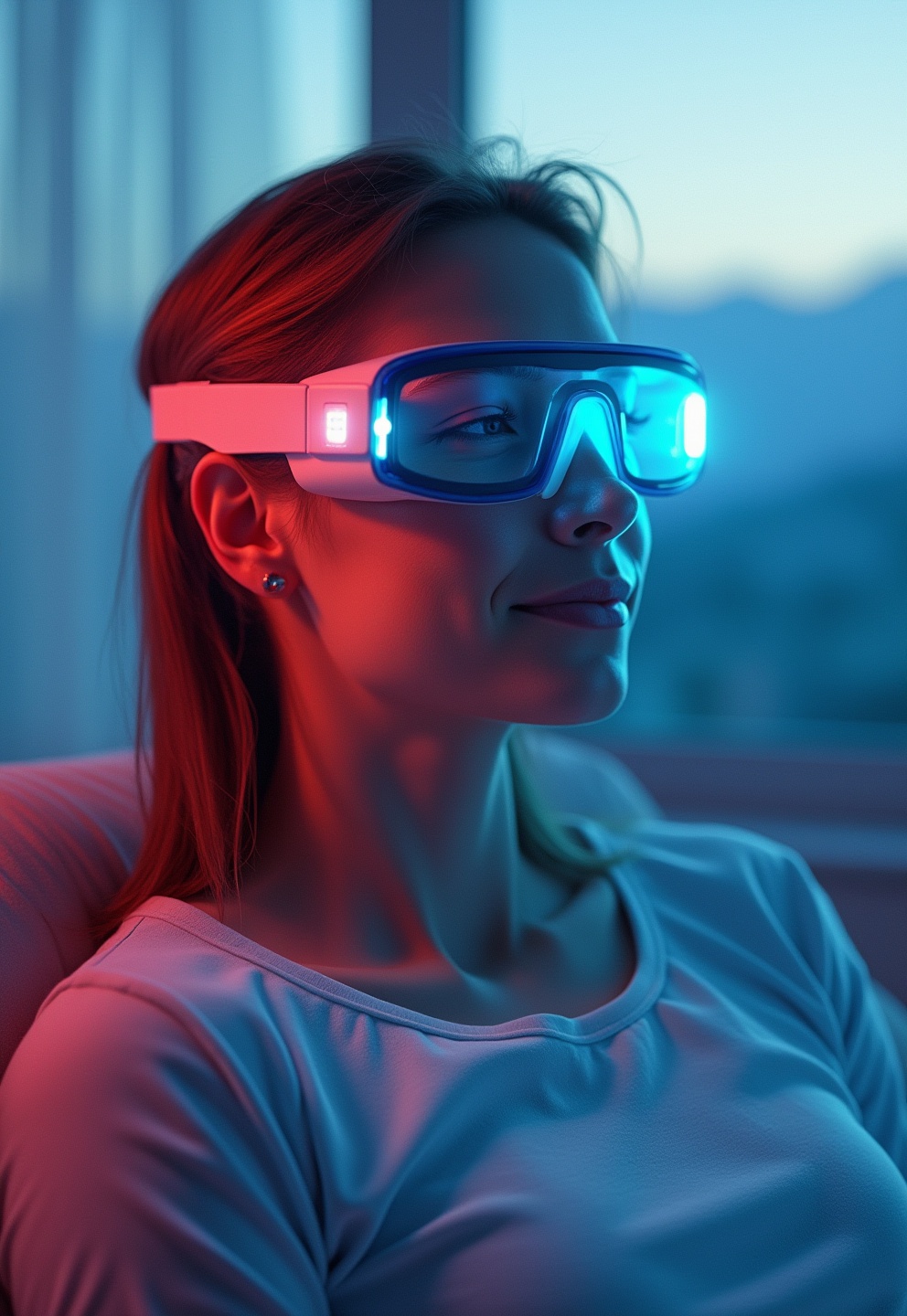
- Shinhmar, H., Hogg, C., Neveu, M. et al. Week-long improved colour contrasts sensitivity after single 670 nm exposures associated with enhanced mitochondrial function. Sci Rep 11, 22872 (2021). https://doi.org/10.1038/s41598-021-02311-1
- Moos WH, Faller DV, Glavas IP, et al. Treatment and prevention of pathological mitochondrial dysfunction in retinal degeneration and in photoreceptor injury. Biochem Pharmacol. 2022;203:115168. https://doi.org/10.1016/j.bcp.2022.115168
- Huberman, A. Using Light (Sunlight, Blue Light & Red Light) to Optimize Health. Huberman Lab Podcast #68. https://hubermanlab.com/using-light-sunlight-blue-light-and-red-light-to-optimize-health/
- Dong, H., He, M., & Liu, H. (2024). Repeated low-level red light therapy for myopia control: where are we? Frontiers in Ophthalmology, 4. https://www.frontiersin.org/journals/ophthalmology/articles/10.3389/fopht.2024.1388602/full
- Companion Animal Health. Behind the Shades | A Closer Look at Laser Therapy Eye Protection. https://publications.companionanimalhealth.com/blog/behind-the-shades-a-closer-look-at-laser-therapy-eye-protection
- Project E Beauty. Do I need eye protection for red light therapy? https://www.projectebeauty.nl/blogs/news/do-i-need-eye-protection-for-red-light-therapy
- Tsai, SR., & Hamblin, MR. (2017). Biological effects and medical applications of infrared radiation. Journal of Photochemistry and Photobiology B: Biology, 170, 197–207. https://pmc.ncbi.nlm.nih.gov/articles/PMC5505738/
- UVA Health. Phototherapy. https://uvahealth.com/services/dermatology/phototherapy
- Review of Optometry. (2023). Red-light Therapy For Myopia Prevention Moderately Effective. https://www.reviewofoptometry.com/article/redlight-therapy-for-myopia-prevention-moderately-effective
- Lanzafame, RJ. et al. (2008). The optics and biophysics of laser-tissue interaction. Journal of Clinical Laser Medicine & Surgery, 26(2), 119-25. https://pubmed.ncbi.nlm.nih.gov/18588438/




